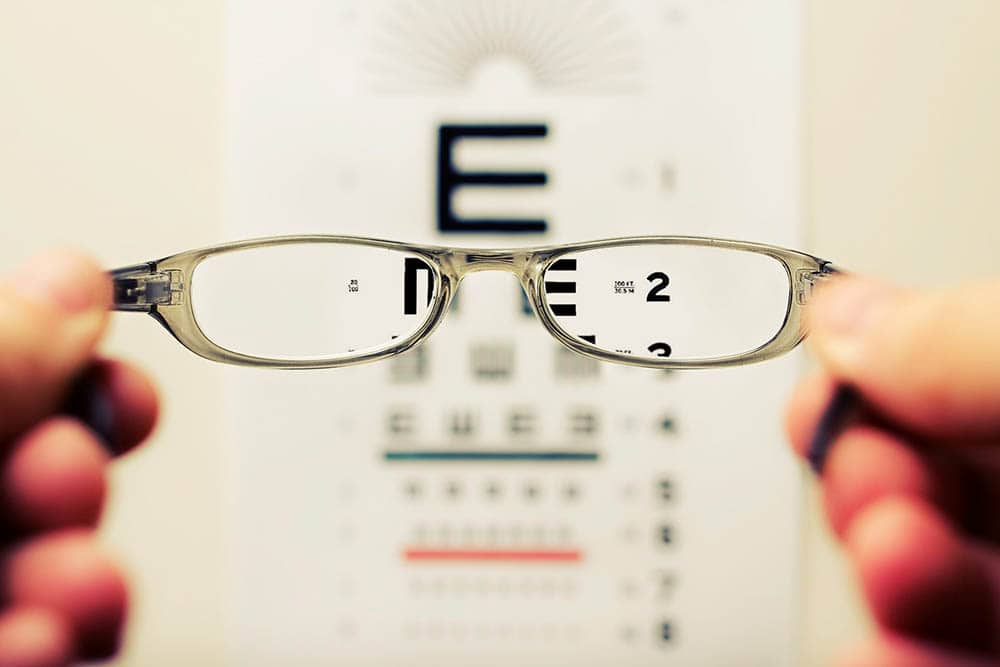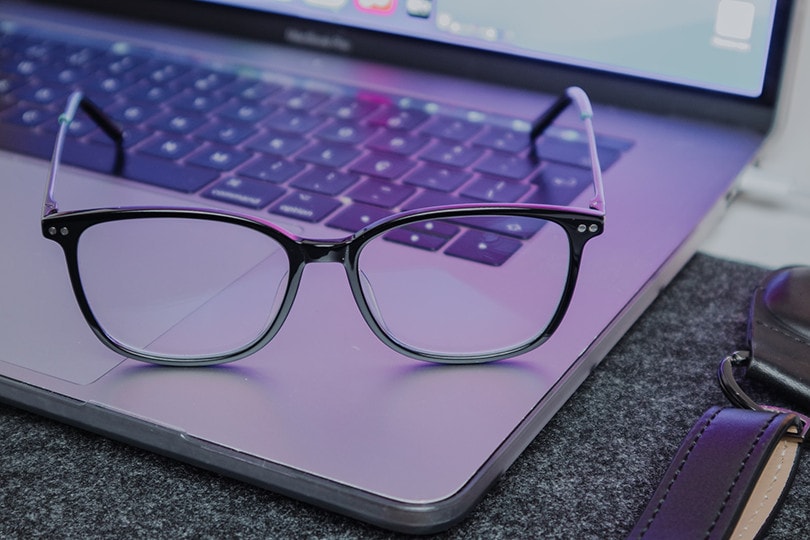What Are Reading Glasses? Do I Need Them?
Last Updated on

Even people with good vision need some help seeing up close sometimes. Reading glasses are a good option if it’s difficult to read small print or see close up with clarity. They’re widely available and don’t require a prescription from an optometrist since they’re only for magnification.
There’s a wide range of quality with reading glasses, however. The wrong ones will work, but they can contribute to headaches over time. Find out all you need to know about getting reading glasses, what to look for, and the alternatives.

How Do They Work?
As we age, our vision can begin to change. Around age 40, people start to see a decline in their eyesight. This can make seeing close up more difficult, even if you’ve had good vision for most of your life. Some people need corrective lenses to see far away, or both near and far, but reading glasses are designed specifically to see close up.
Reading glasses use magnified lenses to enlarge whatever is in the viewing area, such as the words in a book or small print on a computer screen. By making the text larger, reading glasses reduce the strain on the eyes. Reading glasses are also used for tasks that require attention to small details for long periods, such as painting or sewing.

What Are the Different Types of Reading Glasses?
There are two types of reading glasses: full frames and half-eyes.
- Full frame reading glasses are ideal for people who spend a lot of time focusing on close-up images. With these glasses, it would all seem blurry if you looked up to try to see across the room.
- Half-eye reading glasses allow you to look down and through the lenses for close-up work, but if you pick your head up, you can see over them at a distance. These are more like the classic image of Ben Franklin in glasses.
Other options for reading glasses may include:
- Computer glasses: Reading glasses are used to read small text but not necessarily on a computer screen. You may prefer to get glasses specifically made for computer screens rather than general reading glasses.
- Reading sunglasses: Tinted reading glasses are available for seeing close up in the sun. They offer UV protection, just like sunglasses, and an anti-reflective coating.
Like prescription glasses, reading glasses are available in a wide variety of styles and colors. You can choose a frame size to fit your face and a frame shape that works with your facial features, such as oval, rectangular, round, and square. They also come in a variety of rim materials, including metal, plastic, cloth, leather, and semi-rimless, though most are made of plastic.

When Are They Used?
Many people over the age of 40 will need reading glasses or some other type of near-vision correction. Reading glasses compensate for degraded vision related to presbyopia¹, the age-related loss of ability to see up-close objects with clarity. Most people realize they need reading glasses if they struggle to read small print when the light is dim or they’re tired.
Even with over-the-counter reading glasses, it’s important to visit an optometrist for an eye exam. Several eye conditions can cause diminished near vision, such as glaucoma¹, cataracts¹, and macular degeneration¹.
For most, low-power reading glasses between +1.25 to +1.5 are sufficient for work with computer or smartphone screens. For reading, stronger lenses between +2.0 to +2.5 may be necessary. As you age, you may need stronger lenses.
In addition, some people require one lens power for reading up close and another lens power for computer and smartphone use. If this is the case, it’s best to invest in two pairs of reading glasses. If you don’t have the right lens power, headaches, eyestrain, and nausea can develop.

Advantages of Reading Glasses
Reading glasses are available over the counter, without a prescription. You can find affordable options, especially if you’re not worried about the aesthetics. Reading glasses are available at grocers, pharmacies, department stores, and other places. If you want some spares, you can buy several pairs and still spend less than prescription reading glasses.
Disadvantages of Reading Glasses
Reading glasses are cheap, but they can take a toll on your vision health over time. The wrong reading glasses can cause eye strain, headaches, or blurred or double vision. Even high-end reading glasses available at stores can be poorly made, and if the centers aren’t aligned in the lenses, one lens can be clear while the other is blurred.

Frequently Asked Questions (FAQs)
What should I look for in over-the-counter reading glasses?
Test out the glasses by trying on glasses and trying to see the writing on a greeting card or magazine. Keep the text at a comfortable distance to gauge how much clarity the glasses provide. If you’re unable to find the right glasses, make an appointment with your optometrist.

What are the alternatives to reading glasses?
Reading glasses aren’t the only option for issues with near vision. Multifocal lenses, multifocal contact lenses, and corrective surgery like monovision LASIK or refractive lens exchange can correct your vision issues and give you clarity.
What are some myths about reading glasses?
There are several myths surrounding reading glasses. The biggest one is that wearing reading glasses will weaken your eyes, but that’s not the case. Age-related vision loss will continue, with or without corrective lenses, and wearing reading glasses won’t hasten the process.
Another enduring myth is that cataract surgery will correct your eyes, and you won’t need reading glasses. Also, if you have underlying vision issues, they won’t be corrected with reading glasses.
Many people also believe that they’re “paying for the name” with luxury or high-street brands of reading glasses. While that can be true, generally, more expensive reading glasses are a higher quality.

Are reading glasses the same as a prescription?
Reading glasses and prescription glasses may seem like the same thing, but they’re not. Reading glasses are designed to magnify your close vision and may be used occasionally, but they’re not meant to be worn all day every day. They’re basically like holding up a magnifying glass to read.
Prescription glasses are more expensive and must be purchased at an optometrist’s office. They’re custom-made for your specific vision needs and use high-quality materials. If your vision is complicated, or you’re not getting your desired results from reading glasses, it’s best to speak to your optometrist about your options.

Conclusion
Reading glasses are a widely available, over-the-counter solution to issues with near vision. They come in a range of styles, prices, and lens power, allowing you to get the solution you need quickly and easily. Still, reading glasses can range dramatically in quality, and not every option will suit your needs. It’s important to schedule routine eye exams as well to stay on top of your vision health.
Featured Image Credit: David Travis, Unsplash
About the Author Robert Sparks
Robert’s obsession with all things optical started early in life, when his optician father would bring home prototypes for Robert to play with. Nowadays, Robert is dedicated to helping others find the right optics for their needs. His hobbies include astronomy, astrophysics, and model building. Originally from Newark, NJ, he resides in Santa Fe, New Mexico, where the nighttime skies are filled with glittering stars.
Related Articles:
Binocular Magnification Chart: Numbers & Distances Compared
What Is the Best Binocular Magnification for Hunting? Optical Features Explained
How to Clean a Refractor Telescope: Step-by-Step Guide
How to Clean a Telescope Eyepiece: Step-by-Step Guide
How to Clean a Rifle Scope: 8 Expert Tips
Monocular vs Telescope: Differences Explained (With Pictures)
What Is a Monocular Used For? 8 Common Functions
How to Clean a Telescope Mirror: 8 Expert Tips
